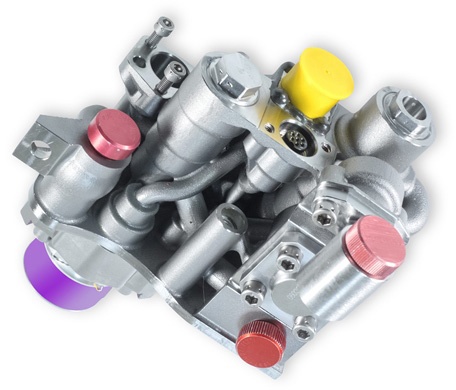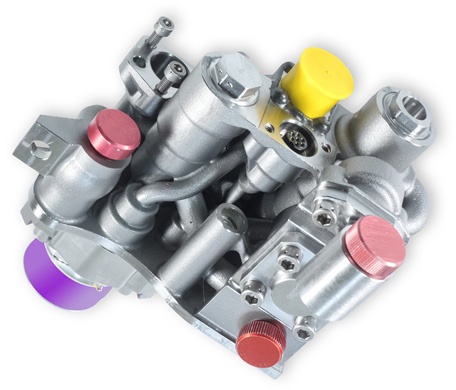Much has been written about the promise of additive manufacturing, and how soon everything will be 3D printed on demand, ushering in a bright shiny future. 3D printing now exists for such diverse items as shoes, cars and even houses. While traditional subtractive manufacturing and production doesn’t have the sex appeal of 3D printing, it is still the backbone of manufacturing, delivering lower costs and higher precision.
It is clear that both additive and subtractive manufacturing and production will have to coexist, but will they merge? In the future, will we talk about hybrid manufacturing without making a distinction between the two?
3D Printing Steals the Spotlight
This month, Liebherr of Germany, announced the first 3D printed primary flight control hydraulic component flown on an Airbus aircraft. Their announcement extolls the virtues of 3D printing, providing a 60% reduction in weight in 30% less space. While the gains are impressive and offer many advantages, what the release doesn’t talk about is that the 3D printed valve block still needed to go through a subtractive manufacturing process: machining, milling, thread cutting, etc. 3D printing alone cannot meet the tolerance requirements, nor provide something as simple as threaded holes. Despite all the inherent advantages, 3D printing is basically a way to produce a sophisticated casting.
After the valve block was 3D printed by laser sintering titanium powder, it followed a traditional manufacturing process, requiring being moved to milling and finishing equipment (each with potentially new fixturing). Despite all of the advantages of 3D printing, it rarely can be relied upon to produce a finished part. And if a part can still be produced using traditional casting and milling, it provides a lower cost than does 3D printing.

Courtesy the Liebherr Group
Is Single-System Hybrid Manufacturing the Answer?
Given that 3D-printed parts often need subtractive methods to complete the manufacturing process, why not combine a 3D printer that can also perform milling and machining? Well Matsuura Machinery Corporation has done just that with the introduction of its Lumex Series – a hybrid machine that combines laser sintering with high-precision end milling. The combined technologies allow for the production of parts with complex geometries for mold making like internal cooling channels and deep slots, with production-ready surface finish and accuracy that can be delivered by precision milling.
Matsuura claims that the Lumex machines can produce a complex part like the one pictured in half the time and with half the cost of traditional methods, and the resulting mold produces parts faster and with higher quality due to the better mold cooling afforded by internal cooling channels in the mold.

Courtesy Matsuura
Is This the Future?
Is this type of hybrid machine the wave of the future, or because of costs and piece part size and tool limitations, will they remain a specialty system used only when manufacturing processes dictates their needs? It may be that this type of machine will only be used for high-end, precision manufacturing where the cost of the machine is far outweighed by the advantages. Or possibly once designers are aware of the possibilities, designs may change to take advantage of a hybrid machine, driving the need for this type of machine, driving down their costs.
Spatial Will Be There
It is always difficult to predict the future — hard to know if these hybrid machines are the wave of the future or will remain a specialty item. But one thing is clear: advanced manufacturing technologies all require 3D modeling and visualization solutions. And Spatial will be there to support OEMs building solutions around this new class of machine, whether it is the CGM Core Modeler for precise representations, CGM Polyhedra for hybrid modeling, and/or HOOPS Visualize to enable interaction with the model. Spatial SDKs will help power this future.








.jpg?width=450&name=Application%20Lifecycle%20Management%20(1).jpg)






